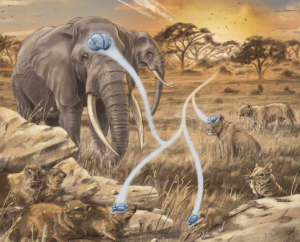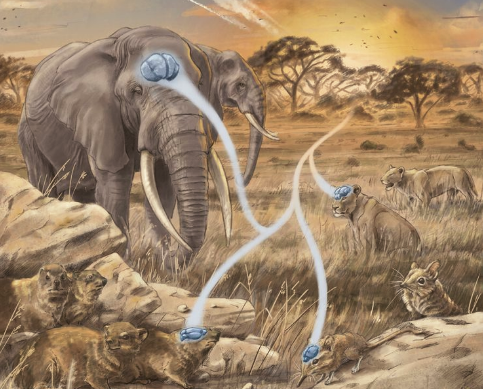Is the Association of Brain Size and Mammalian Intelligence Correct?
An international team of 22 scientists, including biologists, evolutionary statisticians and anthropologists, compared the brain mass of 1,400 living and extinct mammals. The research, published April 28 (2021) in Science Advances, established a timeline of how brain and body size have evolved in mammals over the past 150 million years. The results of the study revealed that although brain size is considered an indicator of animal intelligence in relation to body size, this relationship did not follow a consistent scale throughout the evolutionary process.
 In the study, which evaluated 107 fossils, including ancient whales and ancient world monkey skulls found so far, endocranial volume data from skulls was used instead of brain mass data. Brain measurements were then analyzed along with body size to compare brain size with body size over the long evolutionary period.
In the study, which evaluated 107 fossils, including ancient whales and ancient world monkey skulls found so far, endocranial volume data from skulls was used instead of brain mass data. Brain measurements were then analyzed along with body size to compare brain size with body size over the long evolutionary period.
Surprisingly, much of the variation in the relative brain sizes of mammals living today can be explained by changes in their ancestral lineages after the mass extinction and other catastrophic events. This suggested that the extreme rate of evolution of the brains of the largest mammals, such as dolphins, elephants, and great apes, occurred after a climate change event 23-33 million years ago.
According to the study, humans with large brains, dolphins and elephants, for example, achieved these dimensions in different ways. Elephants’ body size increased, but surprisingly their brain size increased even more. On the other hand, dolphins’ body sizes decreased while their brain sizes increased. Great apes showed a wide range of body sizes, with a general trend consistent with increases in brain and body sizes. In contrast, hominins representing the human lineage showed a relative reduction in body size and an increase in brain size compared to the great apes.
According to the researchers, these complex lattices suggest that for any given species, comparing brain size to body size provides a measure of the intelligence of the species, requiring a reassessment of the ingrained paradigm. At first glance, the importance of taking into account the evolutionary trajectory of body size may not seem like daunting data. After all, many large-brained mammals such as elephants, dolphins, and great apes also have a large brain-body size. However, this is not always the case. For example, the California sea lion has a small brain size in contrast to its remarkable intelligence.
Taking evolutionary history into account, this study reveals that the California sea lion attained a low brain-body size due to strong selective pressures on body size, most likely due to diversification of aquatic carnivores into a semi-aquatic niche. In other words, they have a relatively low brain size, not because of reduced brain size but because of selection for increased body size.
Sometimes, relatively large brains can be the result of a gradual reduction in body size to suit a new habitat or way of moving – in other words, it has nothing to do with intelligence, according to research. Thus, the research supplement argues that using relative brain size as a representative of cognitive capacity needs to be recalibrated according to an animal’s evolutionary history and nuances in the evolution of the brain and body along the tree of life.
The study also suggests that most changes in brain size occurred after two catastrophic events in Earth’s history — such as the mass extinction 66 million years ago and a climate change 23-33 million years ago. The paper authors feel that efforts to truly capture the evolution of intelligence will require more effort to examine neuroanatomical features, such as brain regions responsible for higher cognitive processes. On the other hand, it is argued that the brain-body size relationship is not entirely independent of the evolution of intelligence, but may actually be an indicator of more general adaptations to large-scale environmental pressures that go beyond intelligence.
Source: The evolution of mammalian brain size. Science Advances, 2021. https://advances.sciencemag.org/content/7/18/eabe2101
New study has scientists re-evaluating relative brain size and mammalian intelligence. Phys.org (accessed April 30, 2021). https://phys.org/news/2021-04-scientists-re-evaluating-relative-brain-size.html

